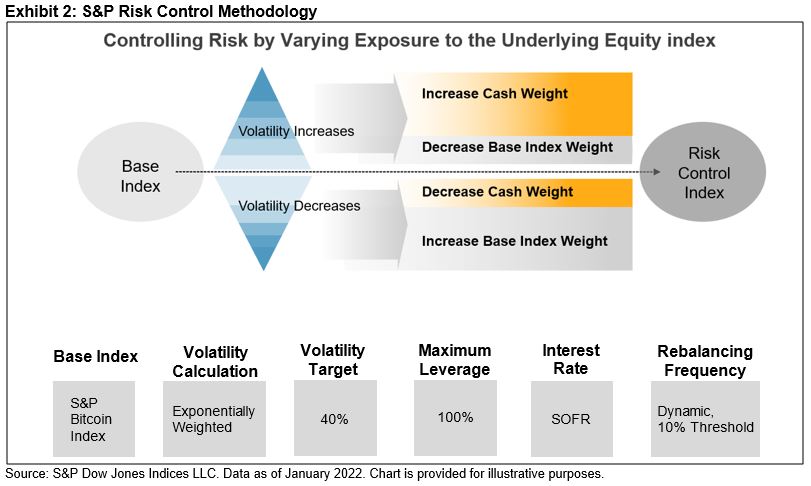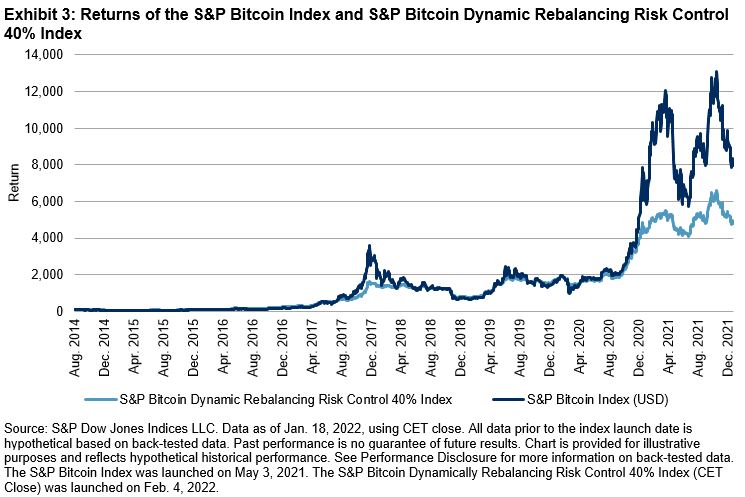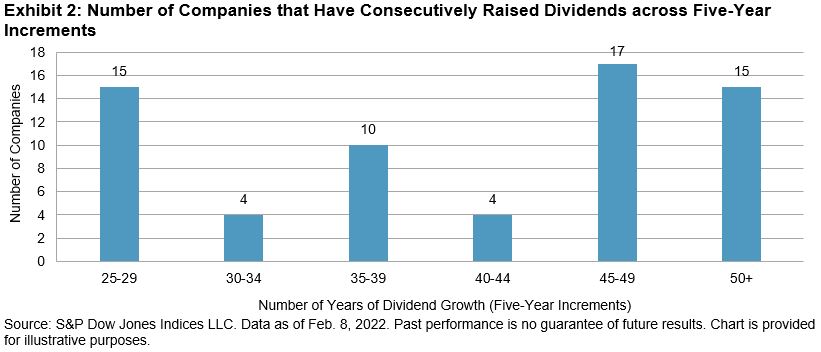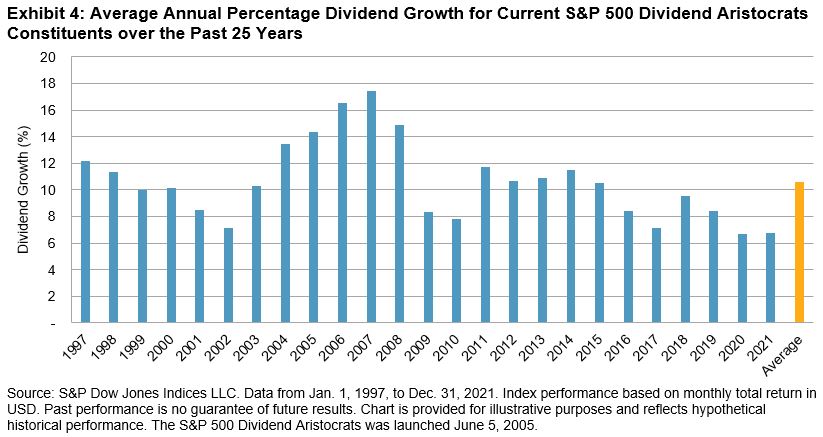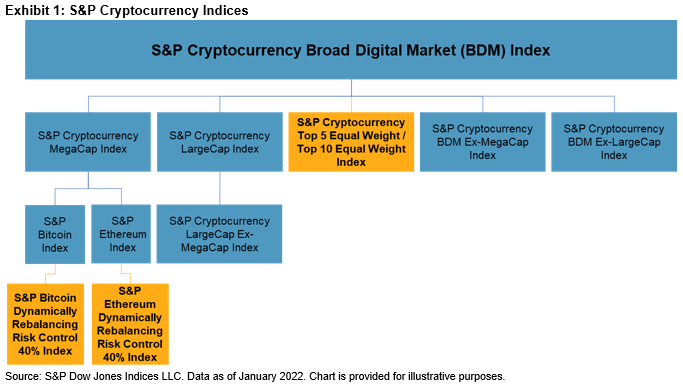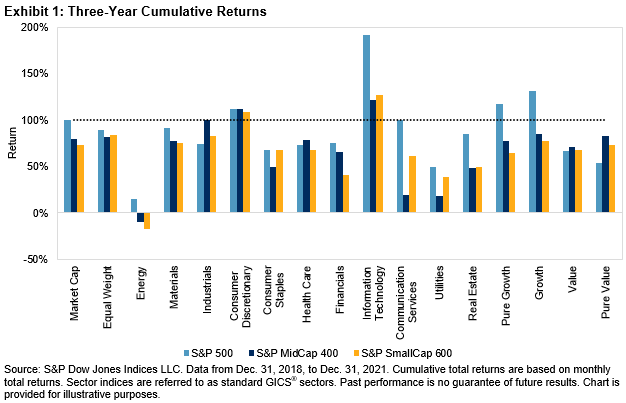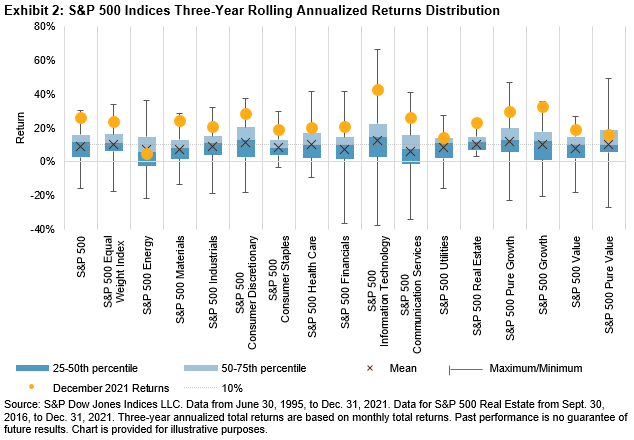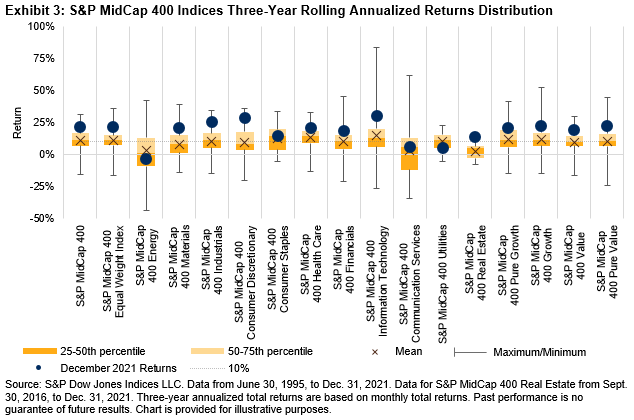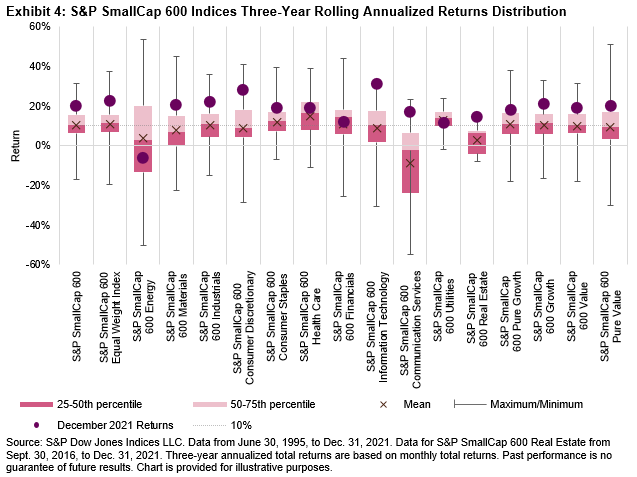Since the last rebalance for the S&P 500® Low Volatility Index on Nov. 19, 2021, the market has experienced gyrations not seen since February 2021. The S&P 500 declined 6.44% since the November rebalance, with daily changes of greater than 1% almost half (44%) of the time. Low volatility strategies are designed to smooth out the path of the broader market at all times, but their work is most visible in times of stress, as shown in Exhibit 1. The S&P 500 Low Volatility Index is down just 1.28% as of Feb. 17, 2022.

Exhibit 2 shows that the volatility of the Information Technology and Consumer Discretionary sectors increased by 2% and 3%, respectively, while the volatility of the remaining sectors was either flat or down (in Energy’s case, by a whopping 9%). But the overall volatility of the S&P 500 rose from 12% to 14%. Information Technology is the largest sector in the S&P 500, as shown in Exhibit 3, and Consumer Discretionary isn’t far off, at #2; these two sectors together account for 42% of the S&P 500. So their small volatility increases, aided by a modest increase in correlations, were sufficient to raise the market’s overall volatility level.

It’s interesting to see that in the latest rebalance, effective after the market close Feb. 18, 2022, Low Volatility pared back its weight in Information Technology (unsurprisingly) but added weight (2%) in the Consumer Discretionary sector. That both sectors still have a presence in the index means that there are stocks within each sector that are still relatively stable. Energy made a reappearance for the first time in almost two years, holding a 3% weight currently. Health Care (3%) and Consumer Staples (2%) both added to their already significant presence in Low Volatility. The additions came at the expense of Industrials (-3%), Technology (-2%), Utilities (-1%), and Financials (-1%).













































